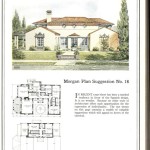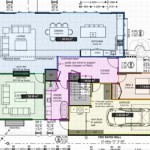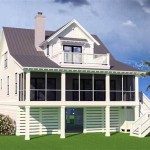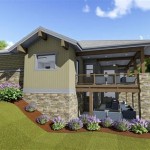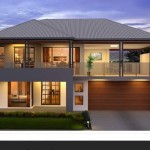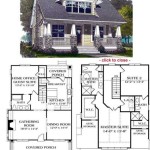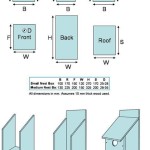Manor House Plans: A Comprehensive Guide to the Future
The concept of a manor house plan evokes images of grand estates, historical architecture, and a lifestyle of refined elegance. While traditionally associated with the past, manor house plans are undergoing a significant evolution, adapting to modern needs and incorporating sustainable design principles to meet the demands of the future. This guide provides a comprehensive overview of manor house plans, exploring their historical context, contemporary adaptations, and the key considerations for those looking to build or renovate such a property.
Historically, manor houses were the principal residences of the lords of the manor, functioning as centers of administration and social life within their respective estates. These structures were often characterized by their substantial size, elaborate architectural details, and prominent placement within the landscape. Common features included multiple bedrooms, expansive living areas, formal dining rooms, libraries, and sometimes even chapels or private theaters. Building materials varied regionally, with stone, brick, and timber being prevalent choices. The design often reflected the prevailing architectural styles of the period, ranging from medieval fortified structures to the grandeur of the Georgian and Victorian eras.
Modern manor house plans retain the essence of these historical precedents while incorporating contemporary living requirements and technological advancements. Energy efficiency, smart home integration, and adaptable spaces are now integral design considerations. The demand for sustainable building materials and environmentally conscious design practices is also shaping the future of manor house construction and renovation.
Key Point 1: Embracing Sustainability in Manor House Design
Sustainability is no longer a peripheral consideration but a core principle in modern manor house planning. This encompasses various aspects, from material selection to energy efficiency and water conservation. Traditional manor houses often relied on local resources, an approach that is being revisited with a focus on sourcing sustainable and ethically produced building materials.
The incorporation of energy-efficient technologies is paramount. This includes high-performance insulation, triple-glazed windows, and renewable energy systems such as solar panels and geothermal heating. Smart home technology further contributes to energy conservation by automating lighting, heating, and cooling systems based on occupancy and environmental conditions. Rainwater harvesting systems and greywater recycling can also reduce the environmental impact of water usage.
Furthermore, landscaping plays a crucial role in sustainable manor house design. Native plant species are favored to reduce the need for irrigation and pesticides, while green roofs and vertical gardens can enhance biodiversity and improve air quality. The orientation of the house itself is also carefully considered to maximize natural light and minimize the need for artificial lighting and cooling.
Utilizing passive design techniques, such as strategic window placement and the use of thermal mass, can further minimize the reliance on mechanical systems. These techniques leverage natural elements to regulate temperature and create a comfortable indoor environment year-round.
Key Point 2: Integrating Modern Technology and Smart Home Features
Modern technology is seamlessly integrated into manor house plans to enhance convenience, security, and energy efficiency. Smart home systems allow for remote control of lighting, heating, cooling, security, and entertainment systems, providing homeowners with unprecedented control over their living environment.
Advanced security systems, including surveillance cameras, motion detectors, and alarm systems, are crucial for protecting large estates. Biometric access control and automated gate systems can further enhance security measures. These systems can be integrated with mobile devices, allowing homeowners to monitor their property remotely and receive real-time alerts.
Entertainment systems are also becoming increasingly sophisticated, with integrated home theaters, multi-room audio systems, and smart lighting controls. These systems can be customized to create immersive entertainment experiences and adapt to different moods and occasions. High-speed internet connectivity is essential for supporting these technologies and enabling seamless communication and entertainment.
The integration of smart technology also extends to the management of the estate itself. Automated irrigation systems can optimize water usage for landscaping, while smart thermostats can regulate temperature in different zones of the house. These technologies can help reduce operational costs and minimize the environmental impact of the property.
Key Point 3: Adaptable Spaces and Flexible Living Arrangements
Modern manor house plans prioritize adaptable spaces that can be easily reconfigured to meet the changing needs of the occupants. This is particularly important for large families, multi-generational households, and those who work from home. Flexible living arrangements can accommodate different lifestyles and provide space for a variety of activities.
Open-plan living areas are a popular design choice, allowing for seamless flow between different spaces and creating a sense of spaciousness. These areas can be easily adapted for entertaining, family gatherings, or simply relaxing. Movable partitions and modular furniture can further enhance the flexibility of these spaces.
Home offices are becoming increasingly important, and modern manor house plans often include dedicated workspaces that are separate from the main living areas. These offices can be designed to accommodate multiple workstations and provide a quiet and productive environment for work. Soundproofing and ergonomic furniture are essential considerations for creating a comfortable and efficient workspace.
The inclusion of guest suites is also a common feature in manor house plans, providing private accommodations for visitors. These suites can be designed to be self-contained, with separate entrances, bathrooms, and kitchenettes. This allows guests to enjoy their privacy while still being connected to the main house.
Multi-generational living is becoming increasingly prevalent, and manor house plans are adapting to accommodate this trend. Separate living areas, such as in-law suites or accessory dwelling units, can provide independent living spaces for different generations while still allowing them to live close together. These units can be designed to be accessible and adaptable for individuals with mobility challenges.
The incorporation of outdoor living spaces is also crucial for creating a comfortable and enjoyable living environment. Patios, terraces, and balconies can extend the living space outdoors and provide opportunities for relaxation and recreation. Outdoor kitchens, dining areas, and fireplaces can further enhance the functionality of these spaces.
Consideration must also be given to the accessibility of the manor house. Features like elevators, ramps, and wider doorways can ensure that the house is accessible to individuals with mobility challenges. Universal design principles can be incorporated throughout the house to create a space that is safe and comfortable for people of all ages and abilities.
In addition to these core design elements, modern manor house plans often incorporate features such as wine cellars, home theaters, gyms, and swimming pools. These amenities can enhance the lifestyle and provide opportunities for recreation and entertainment. The specific features included in a manor house plan will depend on the individual needs and preferences of the homeowner.
The process of designing and building a manor house requires careful planning and attention to detail. It is essential to work with experienced architects, builders, and interior designers who understand the complexities of manor house design and construction. A collaborative approach is crucial for ensuring that the final product meets the homeowner's expectations and reflects their unique style and preferences.
Budgeting is also a critical consideration. Manor house construction can be a significant investment, and it is important to establish a realistic budget early in the planning process. Costs can vary depending on the size of the house, the quality of the materials, and the complexity of the design. It is also important to factor in the cost of landscaping, interior design, and ongoing maintenance.
The future of manor house plans lies in the integration of sustainability, technology, and adaptability. By embracing these principles, it is possible to create manor houses that are not only beautiful and luxurious but also environmentally responsible and adaptable to the changing needs of modern life. The enduring appeal of the manor house lies in its ability to combine historical elegance with contemporary innovation, creating homes that are both timeless and forward-looking.
The selection of a suitable location is also paramount to the success of a manor house project. Factors to consider include the size and topography of the land, the availability of utilities, and the proximity to amenities such as schools, shopping, and transportation. The landscape should be carefully considered to ensure that the manor house is integrated seamlessly into its surroundings. Preserving natural features, such as trees, streams, and wetlands, can enhance the beauty and ecological value of the property.
The architectural style of the manor house should also be carefully considered. While traditional styles such as Georgian, Victorian, and Tudor are popular choices, modern interpretations of these styles can also be very effective. The architectural style should be consistent with the overall design aesthetic and reflect the homeowner's personal taste. The use of high-quality materials and craftsmanship is essential for creating a manor house that will stand the test of time.
Interior design plays a crucial role in creating a comfortable and inviting living environment. The selection of furniture, fabrics, and finishes should be carefully considered to complement the architectural style and create a cohesive design aesthetic. The use of natural light and color can also impact the overall mood and atmosphere of the house. It is important to work with an experienced interior designer who can help bring the homeowner's vision to life.
Landscape design is also an important aspect of manor house planning. The landscaping should be designed to complement the architecture of the house and create a beautiful and functional outdoor space. The use of native plants, trees, and shrubs can enhance the ecological value of the property and create a sustainable landscape. Outdoor lighting can also be used to create a welcoming and secure environment.

Palatial Manor House Plan

Luxury European Manor House Plans Home

Burgundy Manor House Plan Image Weber Design Group Naples Fl

6 Stunning 2 Bedroom House Plan Make My

Preliminary Design For Tüköry Mansion Study A Manor House Scientific Diagram

Ultimate Guide To Modern House Designs For Two Story Flat Roof Homes

Home Plan Camellia Manor Award Winning House Plans Sater Design Collection

House Plans The Best Floor Home Designs Abhp

Luxury European Manor House Plans Home

Luxurious Manor Home 36178tx Architectural Designs House Plans
Related Posts


